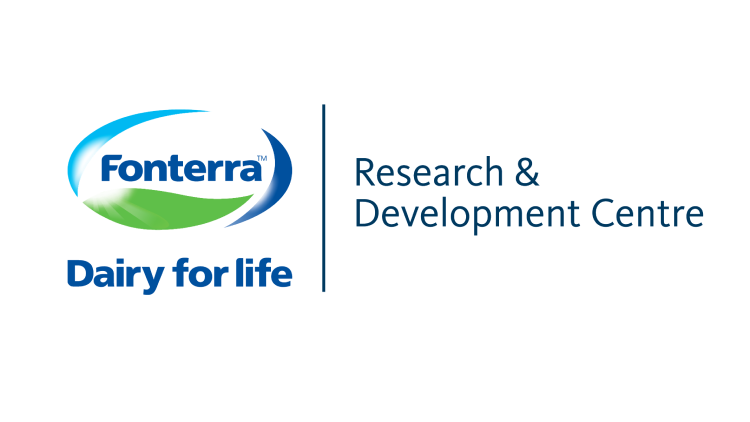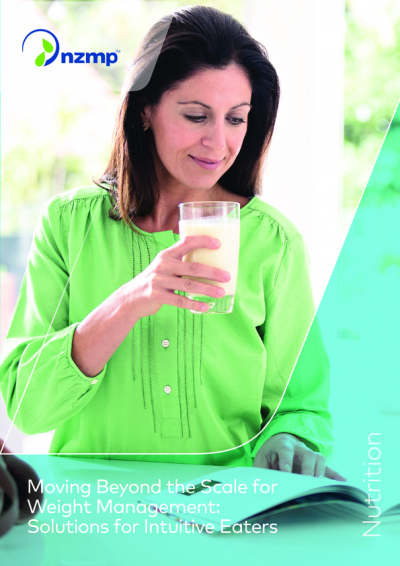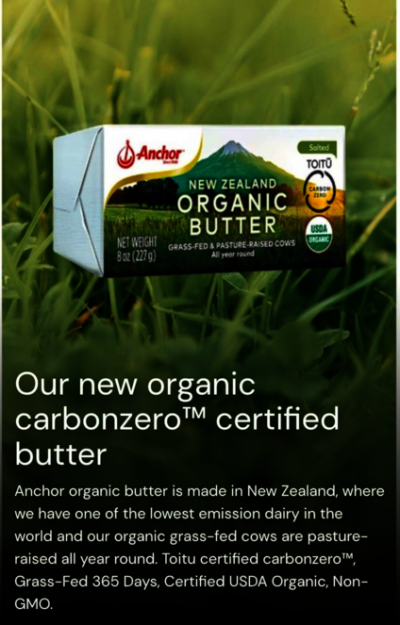Promotional Features
Can an advanced protein formulation for RTD nutritional supplements help combat malnutrition?
Malnutrition remains a significant problem in the US, particularly among the elderly, with rates as high as 28.7% in long-term care facilities and in hospitals.1
Other estimates of malnutrition among hospitalized patients can be as high as 54% depending on the survey used and the patient population.2 This issue not only increases mortality risk and hospital stay duration but also doubles the likelihood of hospital re-admission imposing a substantial financial burden on healthcare systems.3
The recommended protein intake in older and hospitalized adults is the same as for younger and healthy adults. However, experts in the field recommend a much higher protein intake (1.2-1.5 g of protein per kg of body weight daily) for malnourished or at-risk older adults. Oral Nutrition Supplements (ONS) help increase protein intake in hospitals.4
“Malnutrition, in particular protein-energy malnutrition, which is characterized by inadequate protein and energy intake, is predominant even in developed countries,” says Dr Jasmine Thomson, Senior Research Scientist who specializes in nutrition science at Fonterra Research and Development Centre (FRDC).
“Older adults and hospital-recovering patients often struggle to consume enough nutrients due to several factors. These include increased dietary needs, poor appetite, digestive issues, and changes in taste and smell, which can be compounded by difficulties in chewing, swallowing, and self-feeding.”
Ready-to-drink Oral Nutritional Supplements (ONS) offer a practical solution to enhance protein consumption. They play a vital role in supporting the dietary needs of critically ill patients, those in recovery, and the elderly who are vulnerable to malnutrition. To address nutritional deficits effectively, experts suggest a regular intake of small, nutrient-packed servings that deliver a high-calorie and high-protein punch. These nutritional supplements typically derive their protein content from casein, a slow-digesting dairy protein that provides a sustained release of amino acids.
Not all proteins are created equal – protein quality is an important consideration
While the muscle-supporting advantages of protein are well-established, creating high-quality, palatable, and patient-friendly nutritional products remains a challenge. In illness, easily absorbed proteins are crucial for efficient nutrient uptake. Whey proteins excel in medical nutrition for two main reasons: unlike casein proteins, whey proteins remain soluble in the stomach's acid, allowing for quick absorption without curdling; and they are packed with essential amino acids, especially leucine, which is key for muscle protein synthesis.
Known as a 'fast protein', whey leads to a rapid increase in blood amino acids post-meal, which is believed to boost muscle building.5 Whey protein's rapid delivery of essential amino acids, combined with its digestibility and muscle synthesis benefits, make it an ideal component in medical nutrition, potentially slowing muscle loss in hospitalized and recovering patients.
“Creating heat-stable nutritional supplements with high whey protein content is technically challenging due to whey's sensitivity to heat,” says Dr Esra Cakir-Fuller, Nutritional Solutions Manager at the FRDC.
“The thermal treatments applied to liquid oral nutritional supplements to provide microbial control cause whey proteins to denature irreversibly and polymerize into aggregates or gels. This, in turn, leads to unwanted chalkiness, sandiness, lumpiness, high viscosity, and limited shelf life because of sedimentation or gelation soon after production.
"Because taste and texture are key drivers in a patient’s food intake, formulating highly concentrated whey protein oral nutritional supplements remains a big challenge.”
Addressing the production complexities
Navigating the challenges of creating shelf-stable, high-protein supplements, Dr Iman Hashemizadeh, Senior Research Engineer at FRDC, details the intricacies of the process: "Meticulous attention is required during the recombination of ingredients and the ultra-high temperature (UHT) sterilization to avoid issues like foam or protein lumps and to maintain microbial safety without compromising the protein integrity."
He emphasizes that "a careful process that considers the protein powders' properties, precise control, and cutting-edge technology is key to a successful production”.6
Innovating nutritional excellence: A high-protein medical beverage breakthrough
Tackling the complexities of crafting high-protein nutritional drinks together, the Application, Nutrition Science and Engineering teams at the FRDC draw on nearly a century of protein expertise to advance medical beverage solutions. As a significant dairy protein provider to the Global Medical Nutrition Market, Fonterra is known for creating nutritional solutions with its specialized functional proteins.
“We’ve innovated a high-protein, high-calorie, and compact supplement. This product cleverly combines heat-stable functional whey protein concentrate with fast-absorbing milk protein concentrate, offering over 14% protein content, with more than 50% derived from whey, delivering high-quality protein in a small volume for quicker nutrient release and gastric emptying,” says Dr Cakir-Fuller.
"Consumer acceptance is paramount; our goal is to create supplements that not only deliver on their health promises but are also enjoyable and effortless to consume," adds Dr Cakir-Fuller.
Collaborating with Wageningen University, the team conducted a consumer study with independently-living seniors, confirming the product's palatability and texture satisfaction after full portion consumption. Further validation came from a clinical trial in Ireland involving 100 elderly people with impaired nutritional status, where the supplement achieved a 95% compliance rate, signaling strong preference and tolerance, with participants particularly praising its creamy flavor and smooth consistency.
“Together, our teams sought to validate the health benefits, starting with an in vitro model of the human gut and then human clinical trials of both healthy young and malnourished elderly populations," says FRDC's Dr Thomson.
In collaboration with the Riddet Institute, studies confirmed that the solution enhances digestion, as it does not form a curd in simulated gut conditions, promoting faster gastric emptying. Further human clinical trials with Massey University have shown that this aspect maximizes nutrient delivery, shown by the rapid peak absorption of essential amino acids, and in particular, the amino acid leucine which acts as a signal to protein synthesis.7 The formulation outperformed market-leading products based on standard milk proteins in the rapid absorption of leucine.
Dr Cakir-Fuller adds: “Our goal is to continue to develop complex protein formulations that set the standard for high-quality medical nutrition and, in doing so, offer solutions that address the urgent need for effective malnutrition intervention.”
The functional protein ingredients used in the nutritional supplement designed by the FRDC:
- NZMP Functional Whey Protein Concentrate
- NZMP Functional Milk Protein Concentrate
For more information, download the whitepaper here.
References
1. Dent, E.; Wright, O. R.; Woo, J.; et al. (2023). Malnutrition in older adults. The Lancet. 401(10380), 951–966.
2. Corkins, M. R., Guenter, P., DiMaria‐Ghalili, R. A., Jensen, G. L., Malone, A., Miller, S., ... & American Society for Parenteral and Enteral Nutrition. (2014). Malnutrition diagnoses in hospitalized patients: United States, 2010. Journal of Parenteral and Enteral Nutrition, 38(2), 186-195.
3. Guenter, P.; Abdelhadi, R.; Anthony, P.; et al. (2021). Malnutrition diagnoses and associated outcomes in hospitalized patients: United States, 2018. Nutrition in Clinical Practice, 36(5), 957-969.
4. Bauer J, Biolo G, Cederholm T, et al. (2013). Evidence-based recommendations for optimal dietary protein intake in older people: a position paper from the PROT-AGE Study Group. Journal of the American Medical Directors Association. 14(8):542-59.
5. Boirie, Y.; Dangin, M.; Gachon, P.; et al. (1997). Slow and fast dietary proteins differently modulate postprandial protein accretion. Proceedings of the national academy of sciences, 94(26), 14930-14935.
6. N.Z.M.P., (2022). A practical guide to the recombination of milk and milk products. Fonterra Dairying Company, New Zealand.
7. Kruger, M.; Fanning, A.; Van Schaik, J.; et al. (2023). Increased Post-Prandial Plasma Amino Acid Peak Following Compact Ons Consumption With Functional Dairy Proteins. Clinical Nutrition ESPEN, 54, 616.
Additional references
Deutz, N. E.; Bauer, J. M.; Barazzoni, R.; et al. (2014). Protein intake and exercise for optimal muscle function with aging: recommendations from the ESPEN Expert Group. Clinical nutrition, 33(6), 929-936.
Weijzen, M. E.; Kouw, I. W.; Geerlings, P.; et al. (2020). During hospitalization, older patients at risk for malnutrition consume< 0.65 grams of protein per kilogram body weight per day. Nutrition in Clinical Practice, 35(4), 655-663.







